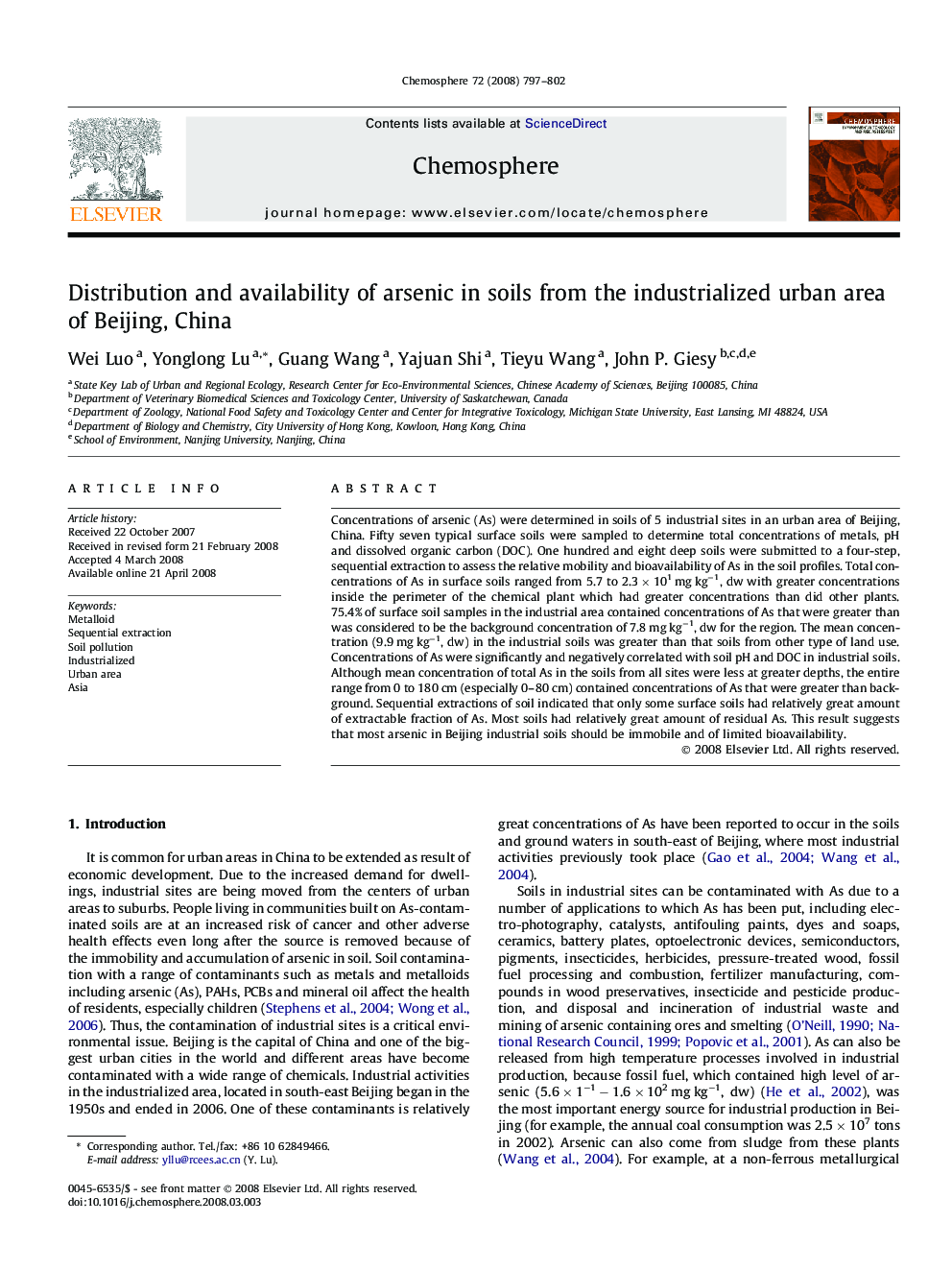| Article ID | Journal | Published Year | Pages | File Type |
|---|---|---|---|---|
| 4414129 | Chemosphere | 2008 | 6 Pages |
Abstract
Concentrations of arsenic (As) were determined in soils of 5 industrial sites in an urban area of Beijing, China. Fifty seven typical surface soils were sampled to determine total concentrations of metals, pH and dissolved organic carbon (DOC). One hundred and eight deep soils were submitted to a four-step, sequential extraction to assess the relative mobility and bioavailability of As in the soil profiles. Total concentrations of As in surface soils ranged from 5.7 to 2.3 Ã 101 mg kgâ1, dw with greater concentrations inside the perimeter of the chemical plant which had greater concentrations than did other plants. 75.4% of surface soil samples in the industrial area contained concentrations of As that were greater than was considered to be the background concentration of 7.8 mg kgâ1, dw for the region. The mean concentration (9.9 mg kgâ1, dw) in the industrial soils was greater than that soils from other type of land use. Concentrations of As were significantly and negatively correlated with soil pH and DOC in industrial soils. Although mean concentration of total As in the soils from all sites were less at greater depths, the entire range from 0 to 180 cm (especially 0-80 cm) contained concentrations of As that were greater than background. Sequential extractions of soil indicated that only some surface soils had relatively great amount of extractable fraction of As. Most soils had relatively great amount of residual As. This result suggests that most arsenic in Beijing industrial soils should be immobile and of limited bioavailability.
Related Topics
Life Sciences
Environmental Science
Environmental Chemistry
Authors
Wei Luo, Yonglong Lu, Guang Wang, Yajuan Shi, Tieyu Wang, John P. Giesy,
